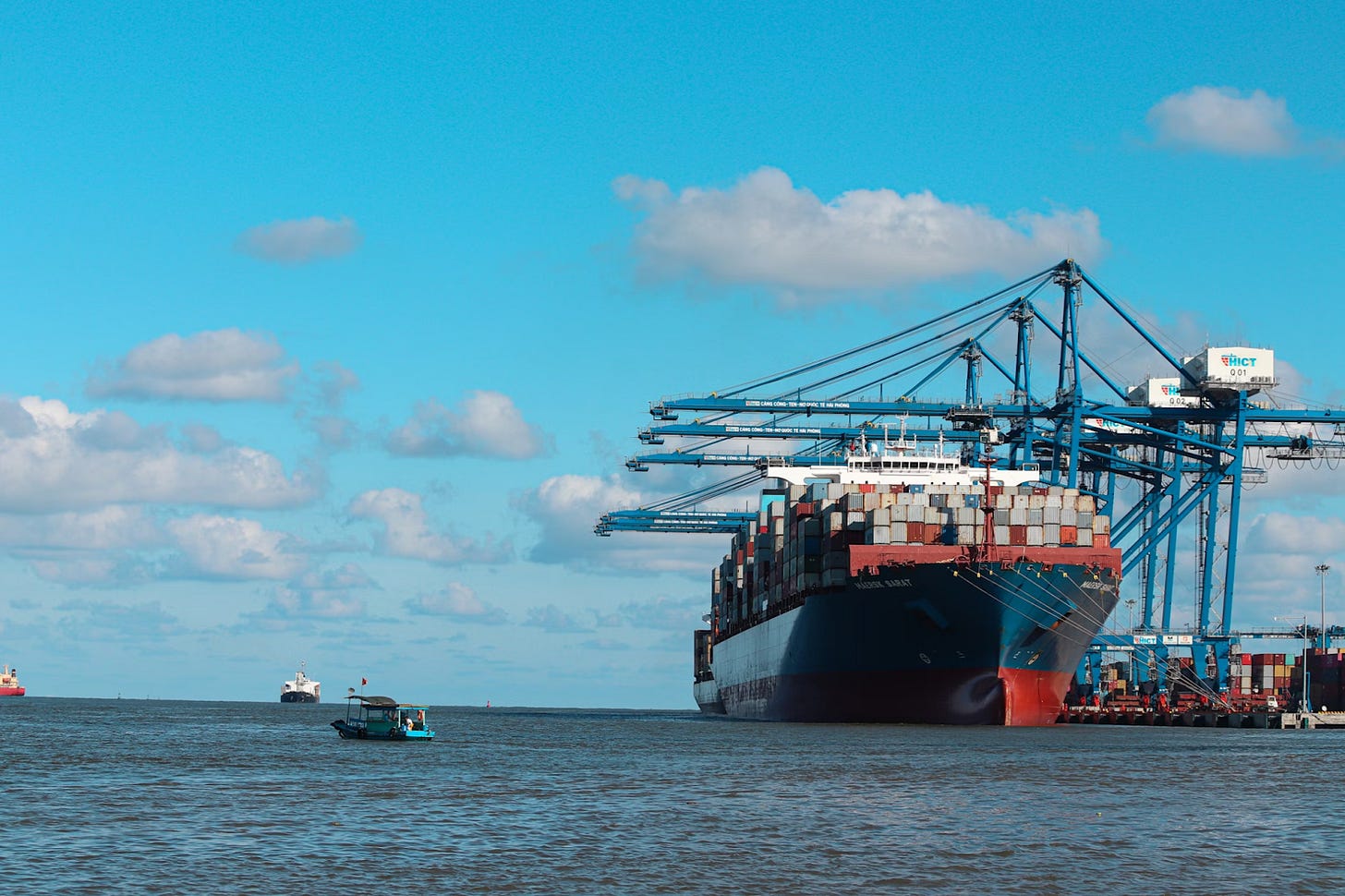Late-Cycle Investment Theory: 10 Recent Snapshots
From AI to money to energy, late-cycle dynamics are reshaping everything

Late-Cycle Investment Theory forms the foundation of my research work. Like any investment framework, its value lies in continuous testing against reality. To refine and strengthen the theory, I'm launching quarterly assessments that examine how its predictions hold up across different geographies and industries.
Q2 2025 has just ended, making this the perfect time for the first such assessment. I'm still experimenting with the format. This inaugural edition takes the form of ten snapshots, each examining a recent development through the late-cycle lens. These range from AI's true nature as an efficiency tool to China's construction of programmable electricity infrastructure. Together, they test whether the theory genuinely explains current market dynamics and geopolitical shifts.
Future assessments may take different forms as I discover what works best. For now, these snapshots offer a first attempt at systematic validation.
1/ AI extends the computing era through efficiency gains
Late-cycle investment theory suggests AI is the efficiency breakthrough of the computing and networks era, not the start of a new one. Just as lean production refined mass production in the 1970s without replacing it, AI optimises the existing paradigm rather than creating a new one.
The hype is understandable—hundreds of billions invested, companies scaling to hundreds of millions in ARR within months, warnings of imminent AGI. But I see AI as the latest phase of the age of computing and networks, which began with personal computing in the 1970s and accelerated with the Internet from the 1990s onwards. AI is not something new: it's only more computing and networks, delivering ever more value, as they have for fifty years.
That said, AI is special for three reasons, all correlated to our being in the late-cycle:
Uncertainty has lifted. As Bill Gurley of the VC firm Benchmark observed in a podcast conversation with Patrick O’Shaughnessy in 2024, this wave appears “highly choreographed. The windows that open up huge doors for innovators and start-ups are usually not choreographed. You don't have the whole world saying, 'Look, this is where we're going.' And yet, here you do.” Within months of ChatGPT's launch, every major tech firm had similar products—unlike previous waves where incumbents were “asleep at the wheel.”
AI demands massive CapEx. As Michael Mauboussin, Head of Consilient Research at Morgan Stanley, noted in the same 2024 podcast, “technology companies are spending two times the CapEx as energy companies”. As a result, it's “very difficult for new companies to come along and keep up”. AI clearly favours incumbents over startups.
Third, AI brings computing to industries that once resisted software due to unstructured data and weak network effects—such as manufacturing. These sectors lack the large user bases that helped software spread elsewhere. The iPhone made it possible to build vast networks: YouTube and TikTok turned millions into content creators, while Uber and Airbnb connected users across two-sided platforms. Manufacturing, by contrast, needs AI to deliver the same level of intelligence and computing power without relying on mass user input.
Like lean production, which extended mass production's dominance for decades through efficiency gains, AI doesn't mark computing's end but its maturation. The technology spreads to previously untouchable sectors, creating the illusion of radical novelty whilst actually representing computing and networks' final conquest of the physical economy.
This sets the stage for understanding why traditional approaches to economic transformation—like America's reindustrialisation dreams—face fundamental contradictions in this late-cycle phase.
2/ American reindustrialisation faces fundamental contradictions
American reindustrialisation faces a fundamental macroeconomic contradiction that Donald Trump's promises cannot resolve. The US President rode deindustrialisation trauma to power, pledging to restore factories and manufacturing jobs. Yet early evidence suggests this agenda collides with America's structural role in the global economy—a role that late-cycle theory predicts becomes increasingly rigid as financial dominance becomes the only remaining advantage.
The Trump family's phone venture illustrates the challenge. Initially marketed as “Made in the USA,” the website quickly shifted to “proudly American”—effectively acknowledging that mass production in America remains economically unviable. As one analyst noted, domestic phone manufacturing means “assembling components” from China “by hand somewhere.”
The deeper obstacle to reshoring is macroeconomic. America's persistent trade deficits exist because foreign capital seeks dollar-denominated assets, requiring dollar outflows through imports. Promoting the dollar as global reserve currency—essential for funding America's massive public and private debt—directly undermines US manufacturing competitiveness by strengthening the currency and making exports expensive whilst imports become cheap.
This leaves two unsatisfactory resolutions:
Close the economy through extreme protectionism, forcing captive American consumers to buy lower-quality, more expensive domestic goods.
Celebrate small-series, high-specification manufacturing as ‘reshoring victory’ whilst ignoring that this bears no resemblance to China's large-scale production capabilities.
Tesla's declining performance underscores this distinction. In the critical Chinese market, competitors now deliver comparable features at lower prices using the flexible, high-volume manufacturing ecosystem that once powered Apple's global success—that is, as told by Patrick McGee in Apple in China, requiring millions of trained workers, elastic labour pools, and comprehensive state support.
Tesla is not in better shape in the US market, where Trump's anti-EV policies have eliminated tax credits that helped drive adoption whilst Musk's political alignment has alienated the coastal consumers who formed Tesla's core customer base.
Overall, America excels at automated, low-volume production for defence and medical device customers who aren't cost-sensitive, but lacks the institutional capacity for true mass manufacturing revival, China-style. This reveals a late-cycle reality: financial dominance and manufacturing prowess increasingly conflict in the global economy. As we'll see in the market dynamics that follow, this conflict is forcing radical adaptations across the investment landscape.
3/ Private equity pivots to insurance for permanent capital
Private equity's pivot to insurance reveals the structural exhaustion of its traditional fundraising model—a textbook late-cycle adaptation when established approaches hit their financial limits.
A few weeks ago, I wrote an in-depth assessment of the state of private equity, pointing out that the industry faces an unprecedented crisis in capital formation. Exit-to-investment ratios have fallen below 0.5x, meaning firms are selling less than half of what they're buying. Unrealised portfolios have ballooned to $3.2 trillion, creating a massive overhang that distorts the entire asset class.
One aspect that I didn't discuss was the attempt of some private equity firms to address this problem by securing permanent capital. In particular, as recently covered by FT Alphaville's Toby Nangle, rather than accept reduced scale or seek improved performance, private equity firms are acquiring insurance companies to secure captive capital pools. Apollo's $1.3 billion in annual fees from Athene Annuity, KKR's $536 million from Global Atlantic, and similar arrangements across the industry reveal a systematic shift from external fundraising to internal capital generation.
This mirrors Warren Buffett's Berkshire Hathaway model, where “insurance float” provides permanent capital at zero cost. As Goldman Sachs explained in a 2010 research paper, float represents money held by insurers to pay future claims, invested for the insurer's benefit whilst premiums are collected well before losses are paid. When underwriting remains profitable, insurers essentially get paid to borrow money from their customers.
Yet private equity's application differs fundamentally from Berkshire's approach. Where Buffett uses float for patient value investing in public markets, private equity firms direct insurance premiums toward their own portfolio companies. According to credit rating agency AM Best, private credit holdings among US life insurers have doubled over the past decade, topping $1.6 trillion in 2023. Of the eight insurers with the highest share of affiliated bonds, six are private equity-linked.
Academic research by Divya Kirti and Natasha Sarin reveals the consequences. When private equity firms acquire insurance companies, they systematically redirect the insurers' investment portfolios toward their own portfolio companies rather than maintaining diversified holdings.
This captive arrangement forces insurance premiums to fund private equity deals, concentrating risk within the firm's ecosystem. The researchers found that this internal lending increases the insurers' expected annual losses by 50 percentage points compared to independent insurers, whilst private equity owners profit through management fees and reduced capital requirements rather than improved insurance operations.
The 777 Partners collapse illustrates the risks. The Miami-based group drew financing from affiliated insurance companies that exceeded regulatory limits, ultimately leaving three insurers in “hazardous financial condition” and forcing regulatory intervention. What began as private equity's solution to fundraising constraints became a transmission mechanism for concentrated risk across the financial system.
This private equity insurance strategy represents classic late-cycle behaviour: when traditional growth mechanisms fail, incumbent players create increasingly complex, financially engineered structures to maintain scale. But as the next section shows, even private equity's attempts at operational transformation through AI face fundamental obstacles.






